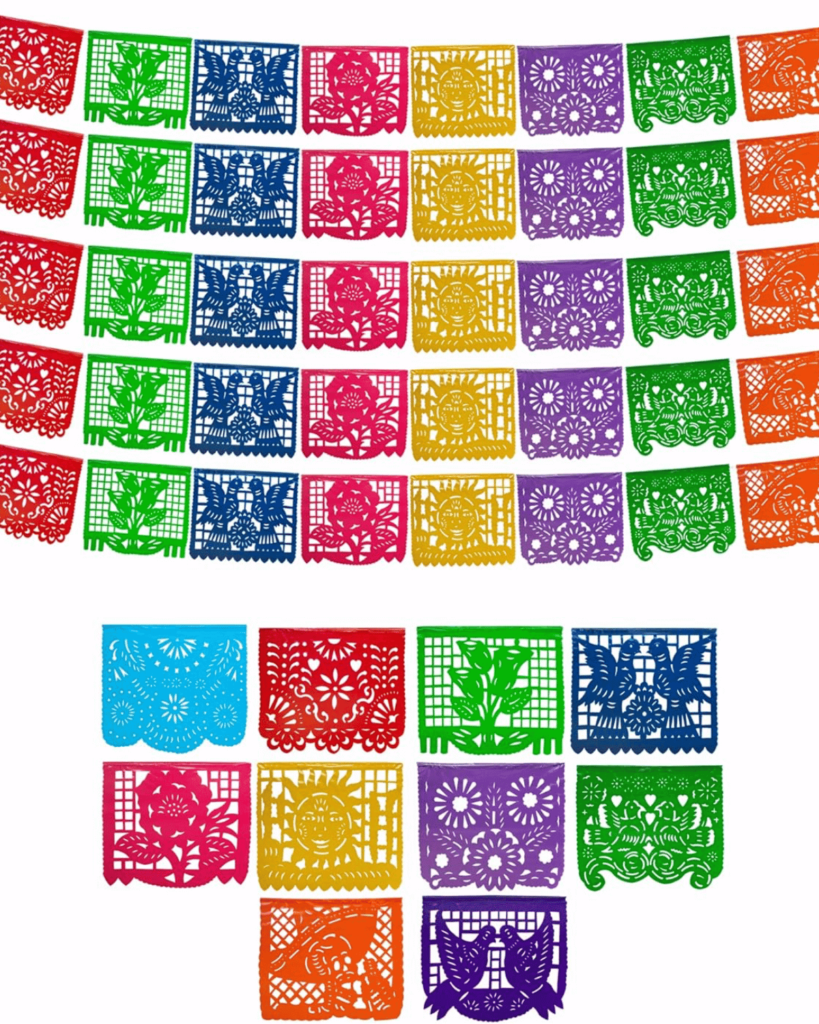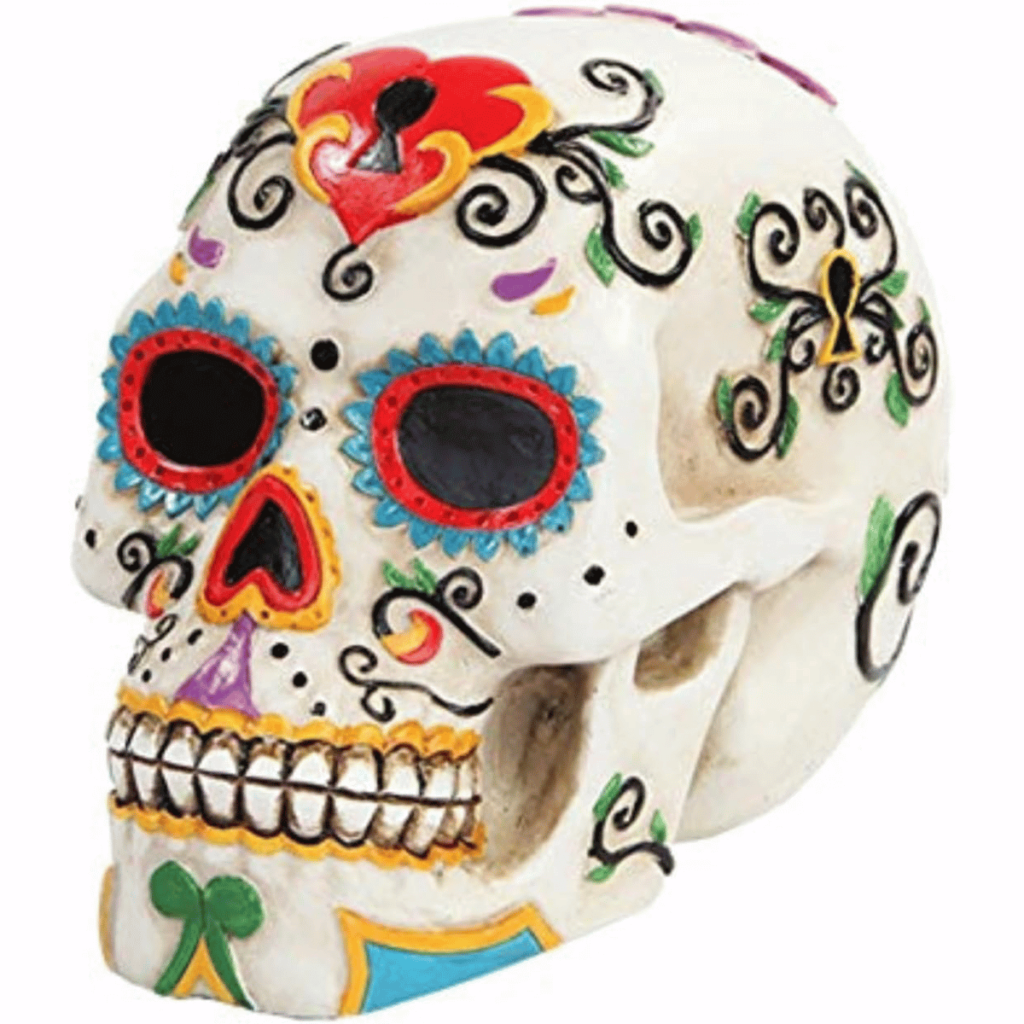9 Traditional Items to Include in Your Day of the Dead Ofrenda (Altar) and Their Meaning
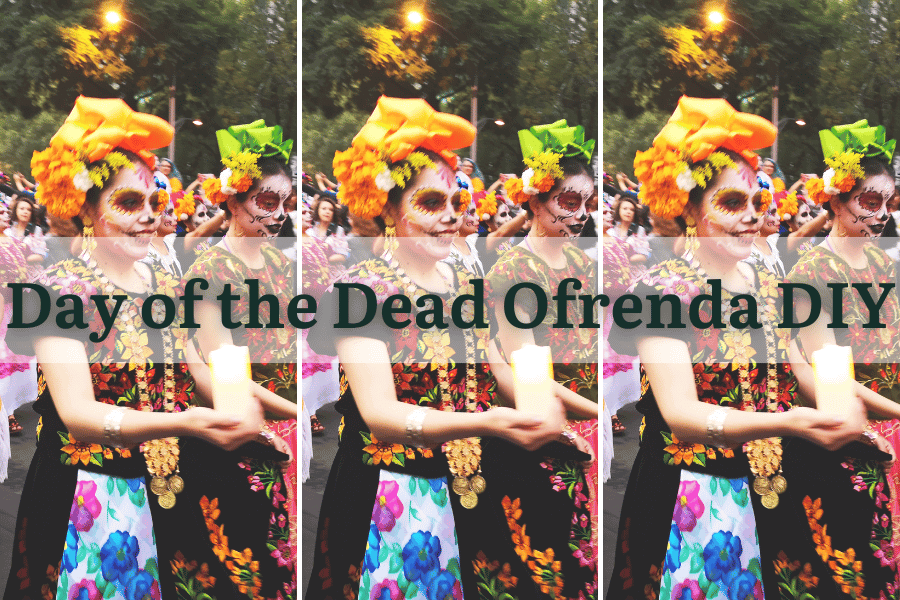
What is the Day of the Dead?
The Day of the Dead (Día de los Muertos) is a Mexican holiday celebrated from October 27th through November 2nd. It is a time to honor and remember deceased loved ones with various traditions, including creating altars (ofrendas) adorned with photos, candles, flowers, and food.
This blog post is all about the nine traditional items to include in your Day of the Dead ofrenda.
Why is the Day of the Dead celebrated?
The Day of the Dead is celebrated to honor and remember deceased family members and friends. It is believed that during this time, the souls of the departed return to the world of the living to reunite with their families.
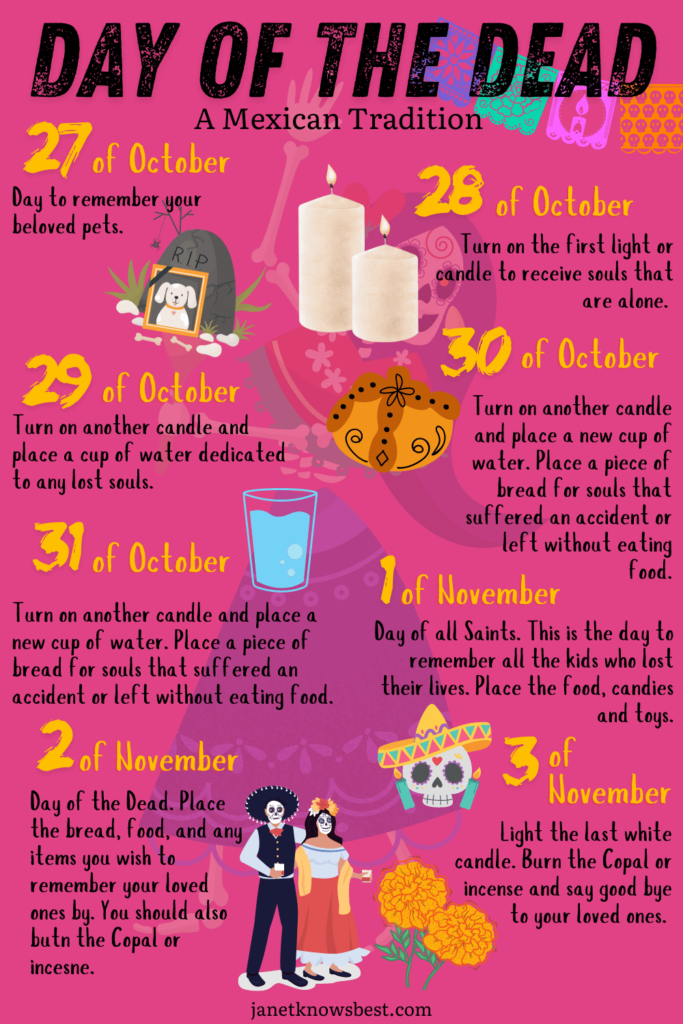
How do families prepare for the Day of the Dead?
El Dia de Los Muertos is a changing tradition with no hard rules on what to include in your Day of the Dead ofrenda or altar. You’re ‘supposed’ to build the ofrenda at the cemetery, over the grave, and stay all night drinking and playing music, as shown in the movie Coco.
Can anyone participate in Day of the Dead celebrations?
Yes, anyone can participate in Day of the Dead celebrations. It is a beautiful and inclusive tradition that invites people to remember and honor their loved ones who have passed away, regardless of cultural background.
There is only one rule when making your day of the dead ofrenda that I suggest you follow: to make your ofrenda personal and modest, dedicated to your loved ones. While there are many traditional ways to place items on the ofrenda, I will make it simple for all the first-timers, like myself!
What are the traditional elements of a Day of the Dead ofrenda?
A traditional Day of the Dead ofrenda typically includes photos of the deceased, candles, cempasúchil (Mexican marigolds), copal incense, water, salt, pan de muerto (bread of the dead), and calaveras (sugar skulls).
Altar or Ofrenda
So, how do you make a Day of the Dead Ofrenda?
The central item to include in your Day of the Dead ofrenda is the altar. Your altar should have at least two to three levels, preferably starting from the floor. Use boxes, crates, or books on your table to create levels. Cover the levels with a sarape, blanket, or any fabric.
An altar with two steps represents the earth and sky. An altar with three steps represents purgatory, earth, heaven, or the Holy Trinity. The most traditional altar, a seven-level ofrenda, represents the necessary steps to rest in peace.
Every ofrenda includes four elements: water, wind, earth, and fire. Water is left so the spirits can quench their thirst. Papel Picado, or traditional paper banners, represent the wind. The candles represent fire, and food, especially Pan de Muerto or bread, represents Earth.
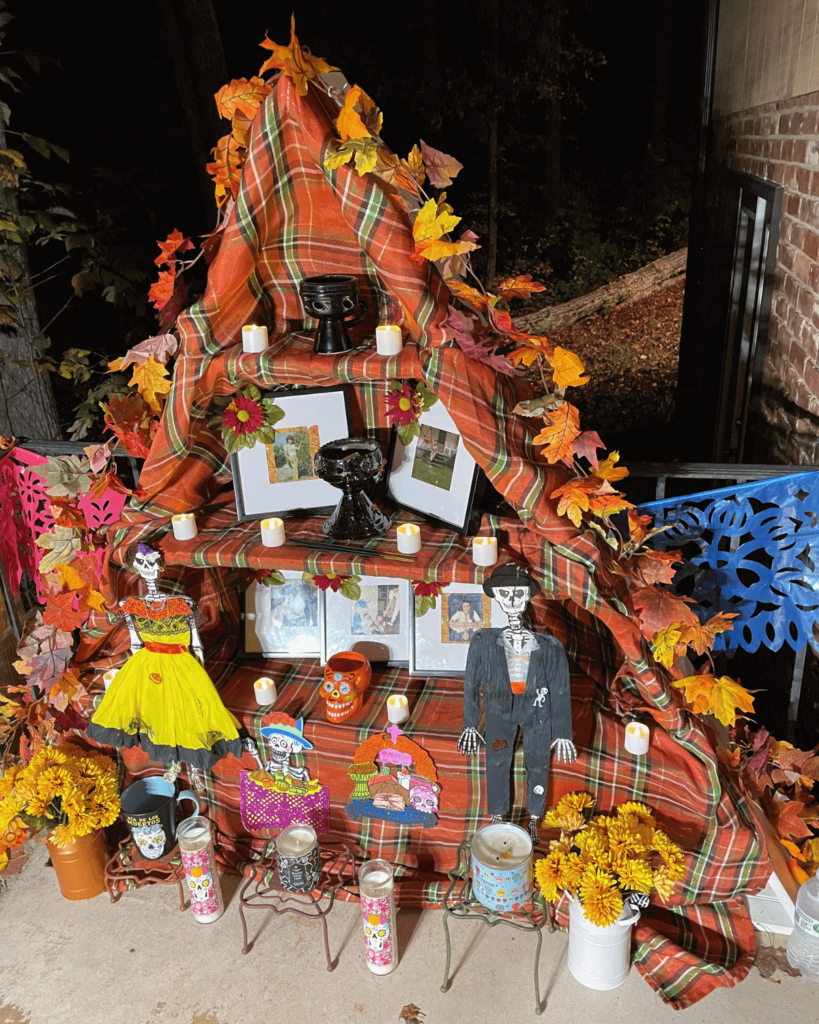
PHOTOGRAPHS
Photographs of deceased loved ones are placed on the ofrenda to honor and remember them. It is a way to pay tribute to their memory and ensure they are not forgotten. The Day of the Dead is when it is believed that the spirits of the deceased return to the world of the living to be with their families. By placing their photographs on the ofrenda, families invite these spirits to visit and celebrate with them. This year, I will include my paternal grandmother, maternal grandfather, cousin, and two aunts. Think of those that you wish to honor and allow in your home.
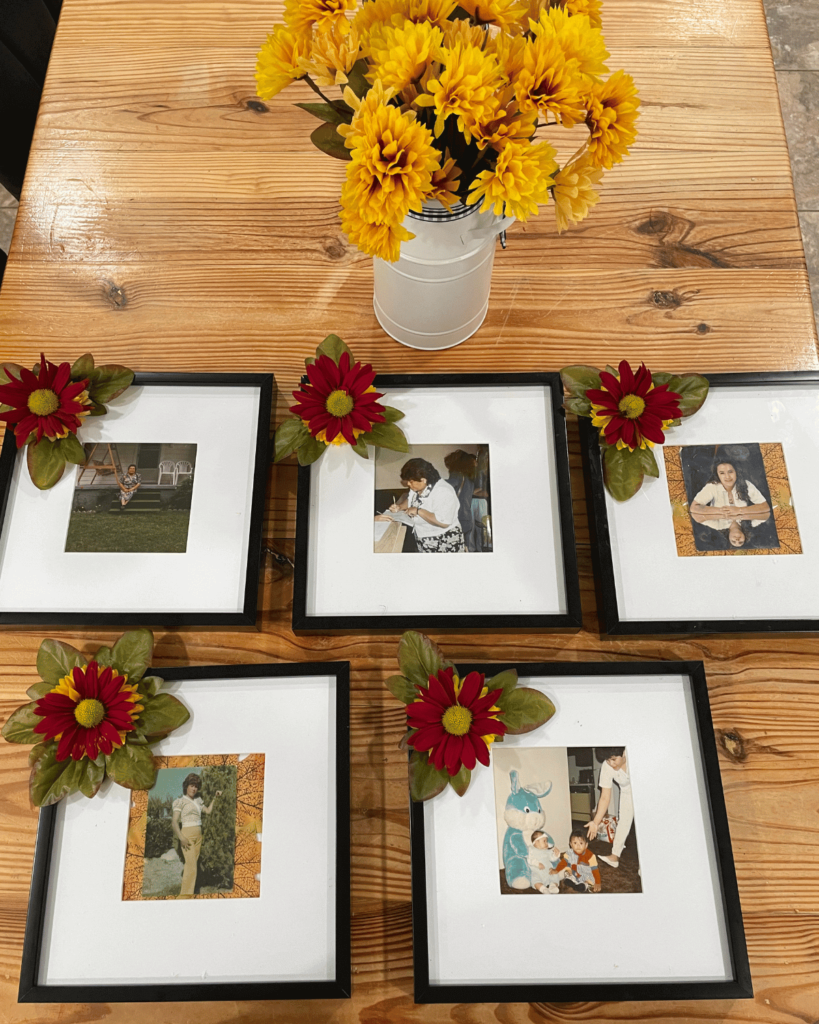
Papel Picado
Your Day of the Dead ofrenda should also include papel picado around the edges of the altar. Papel picado is a traditional Mexican craft of intricately cut tissue paper often used to decorate ofrendas, or altars, during the Day of the Dead celebration. These colorful and delicate decorations are believed to represent the fragility of life and serve as a way to honor and remember loved ones who have passed away.
Papel picado is an essential element of the ofrenda. It adds a visually striking and festive touch to the altar, creating a beautiful and meaningful tribute to the deceased. You can purchase papel picado or DIY your own and make it a fun activity with your kids or family.
CEMPASÚCHIL or Mexican Marigold
The Mexican marigold flower, known as cempasúchil, is native to southeastern Mexico. Its bright orange petals and strong scent are believed to guide the spirits to the ofrenda. The vibrant color symbolizes the sun, which is essential for life, and the aroma helps attract the souls of the dead. If fresh marigolds are unavailable, artificial flowers, such as those from Hobby Lobby, can be used. The tradition is ever-evolving, so use what you have available to you.
COPAL or Incense
Copal incense has been used in Mexican culture for centuries. Burning copal is believed to attract spirits, ward off evil, and purify the altar area. Traditionally, charcoal is used to burn the copal, producing a lot of smoke. An alternative is using an aromatherapy oil burner for copal, palo santo, or sage. These scents create a welcoming atmosphere for the spirits and enhance the sacredness of the space.
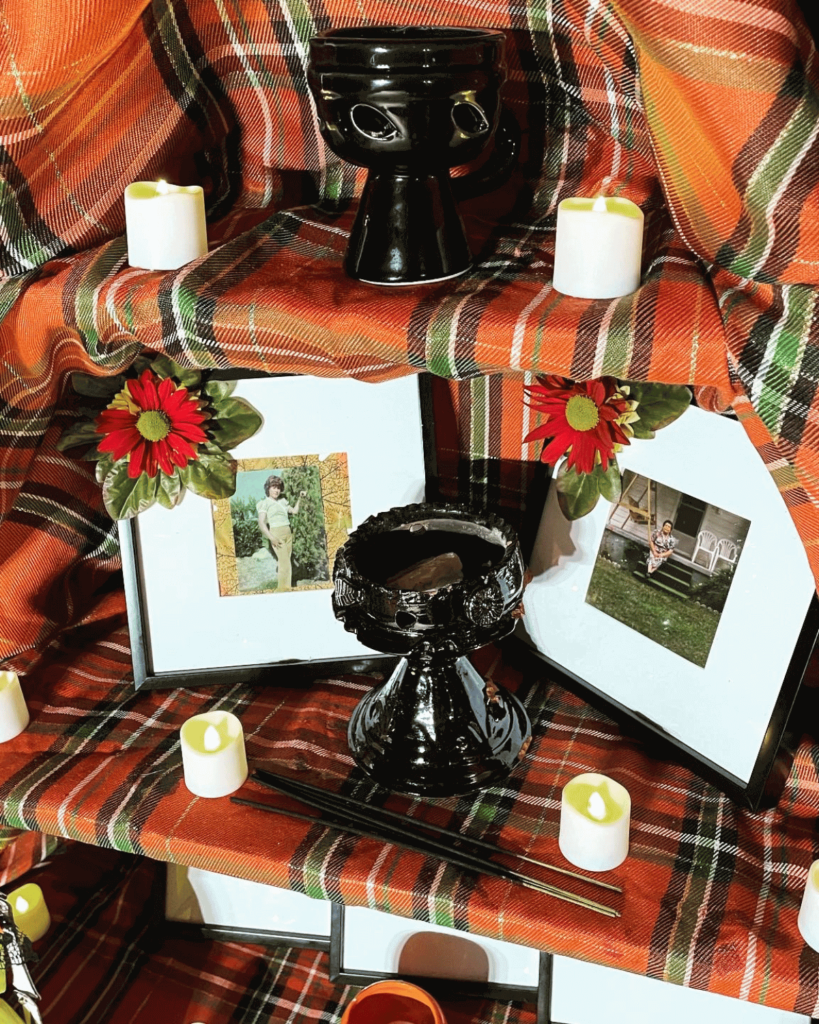
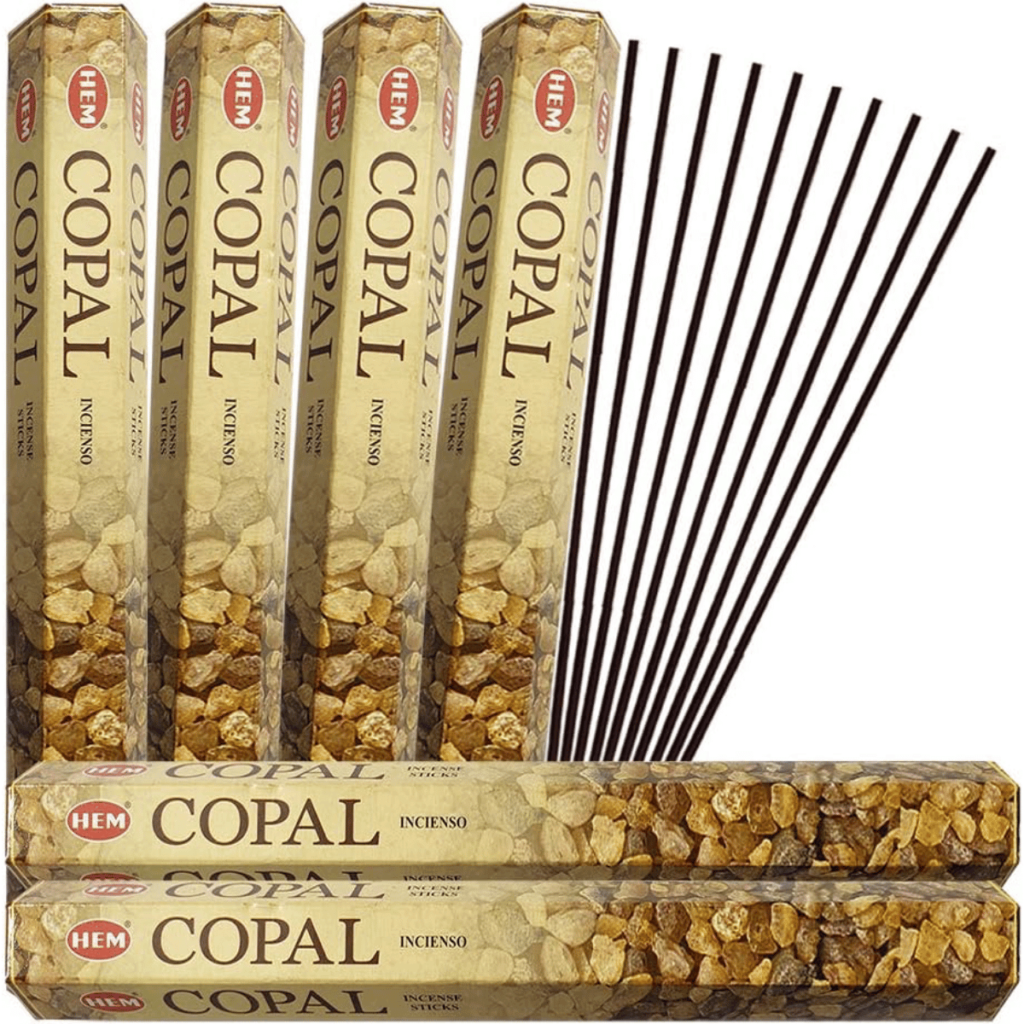
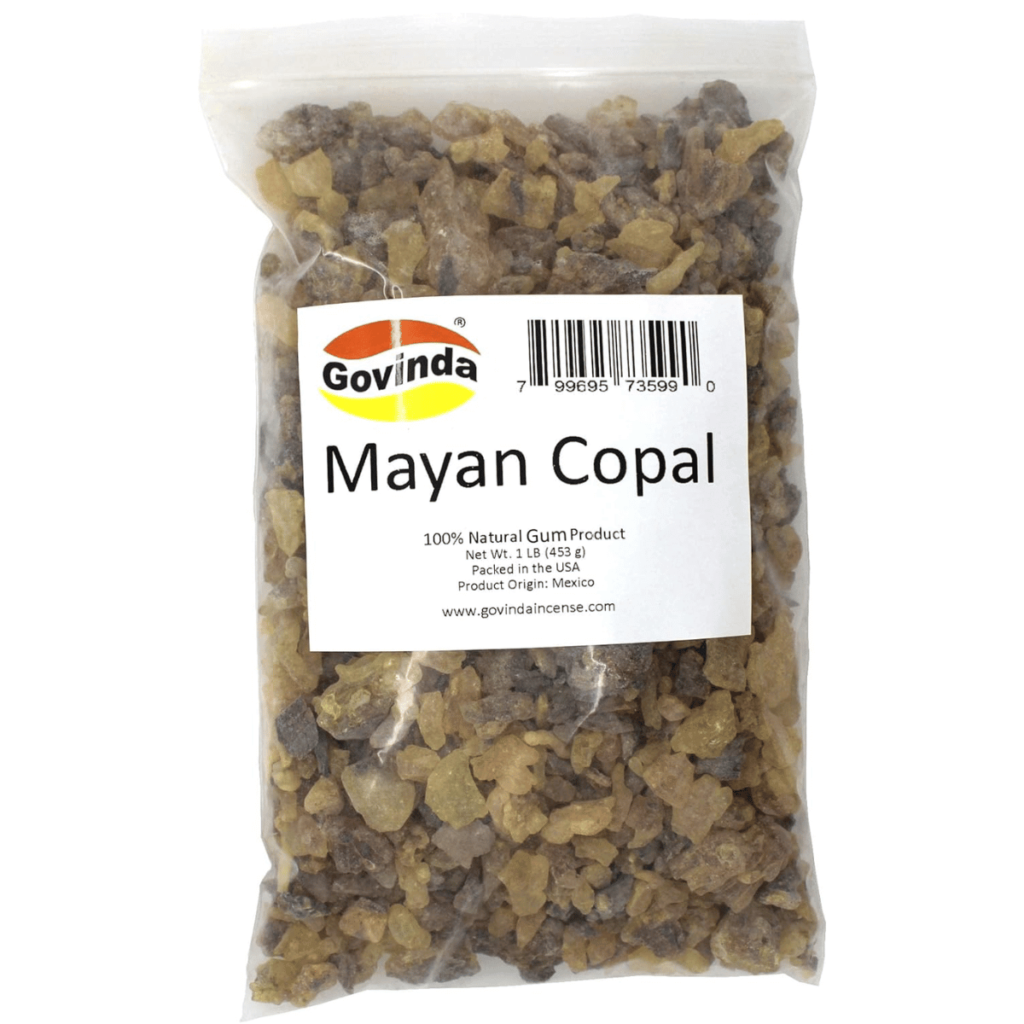
If you decide to buy the resin, then you will also need a Charcoal Incesne Burner and Charcoal Briquettes.
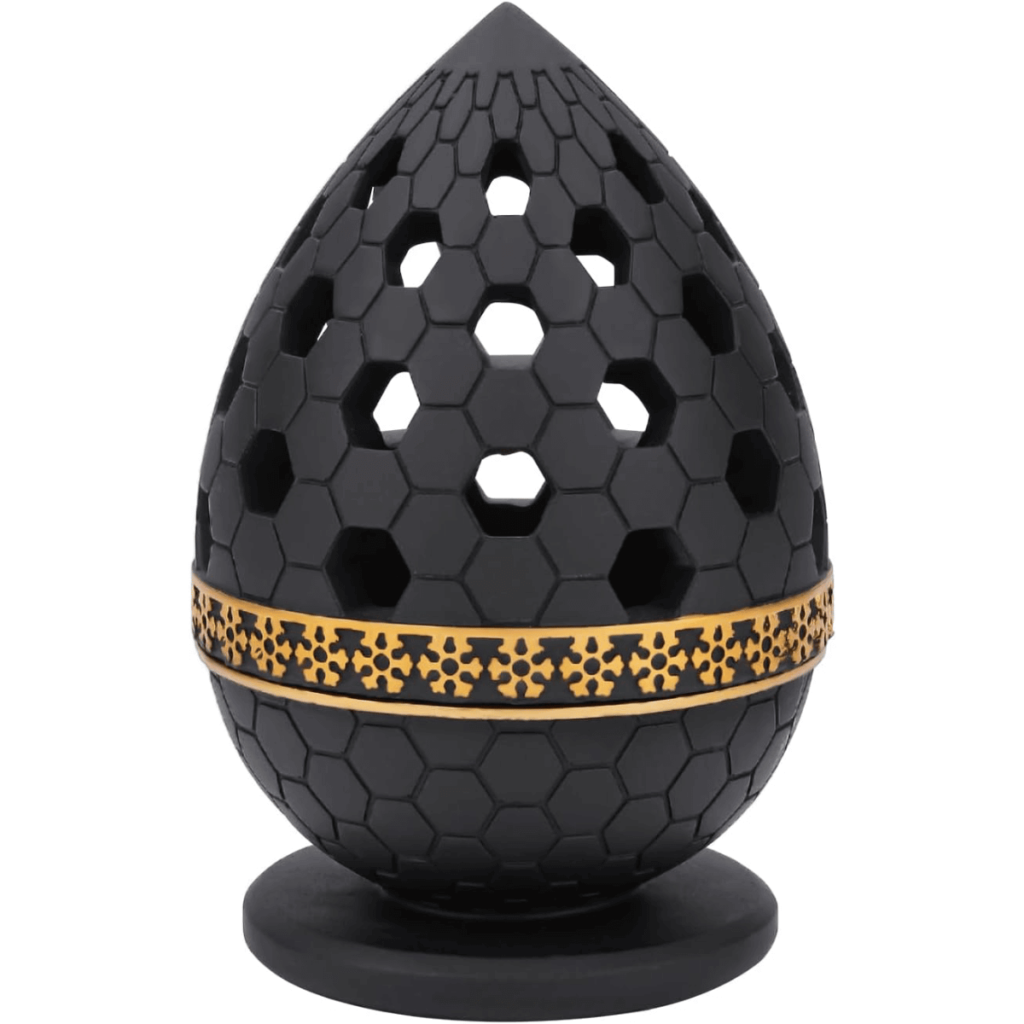
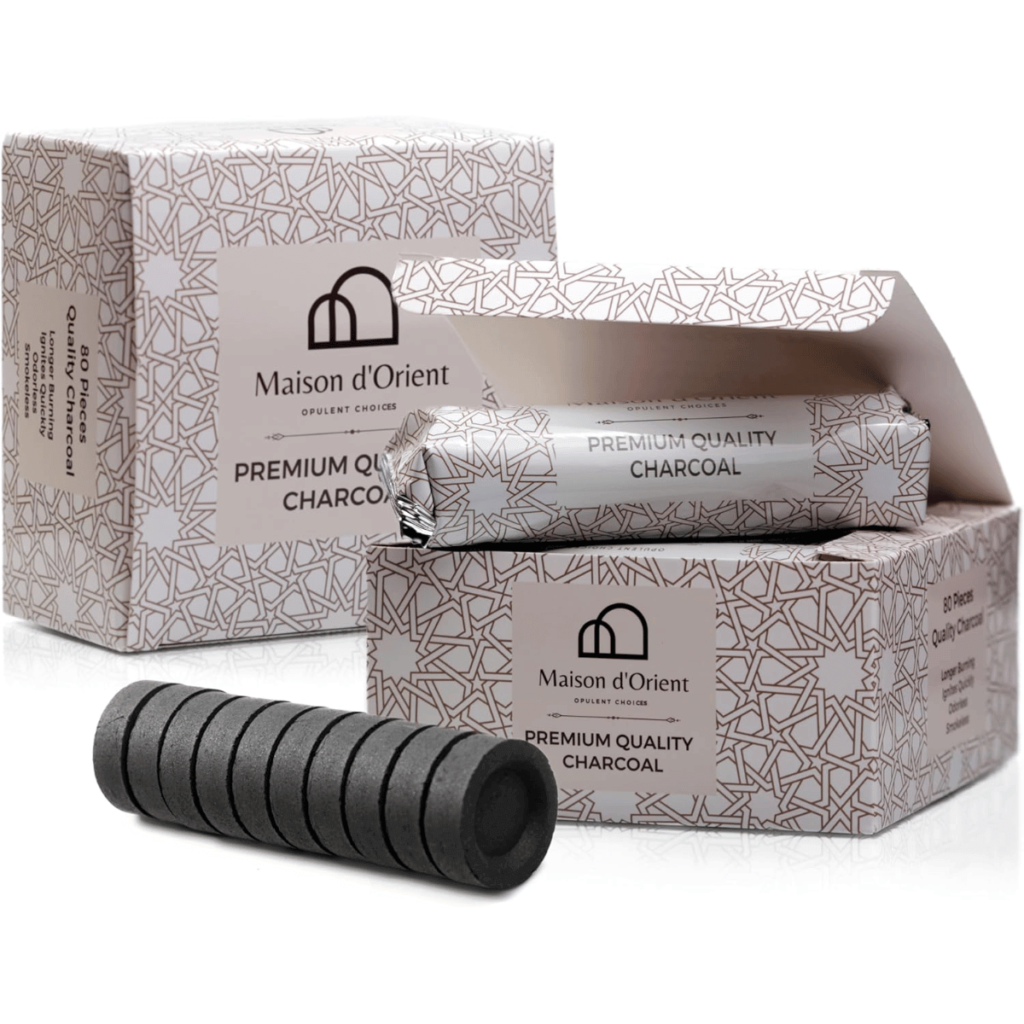
CANDLES
Candles play a crucial role in lighting the way for the spirits. White candles are typically used, with one placed next to each photo on the altar. The light of the candles represents hope and faith, guiding the spirits back to the world of the living. The flickering flames are believed to help the souls find their way to the ofrenda.
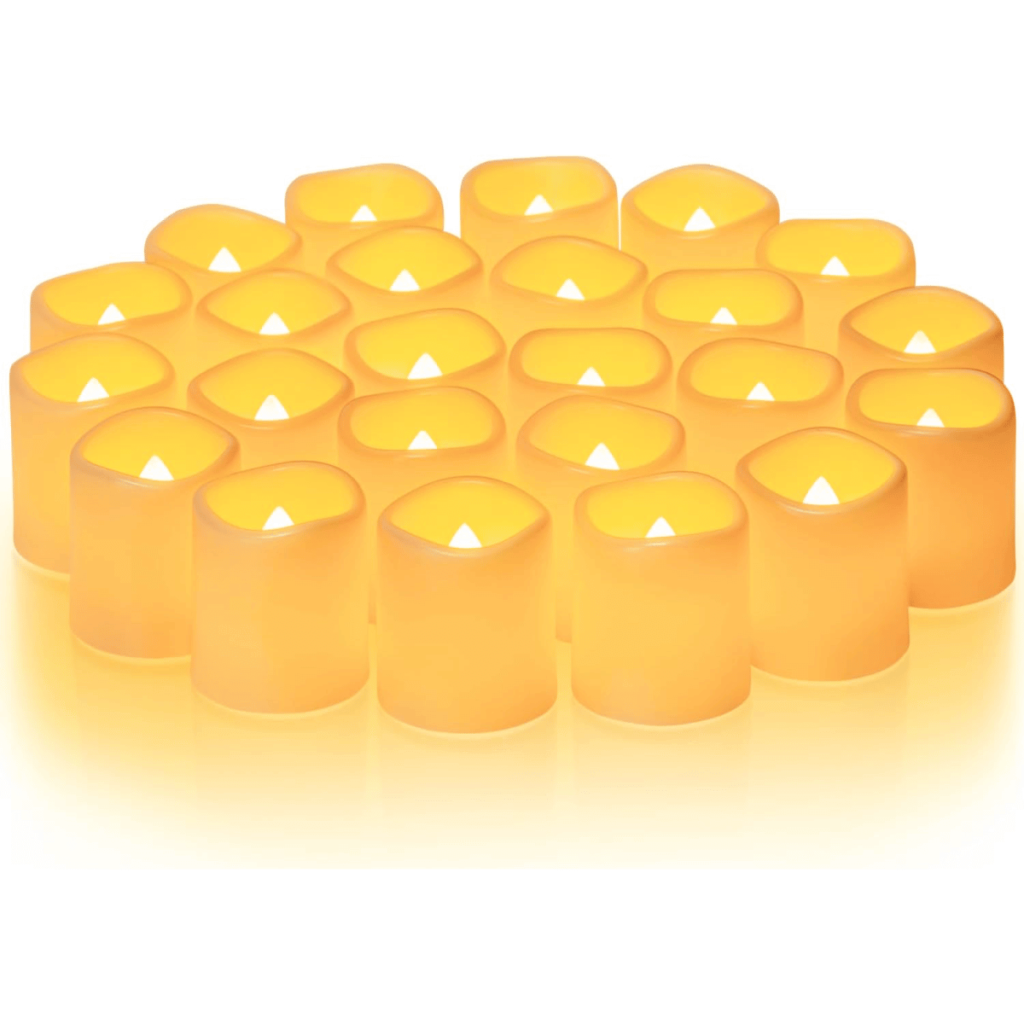
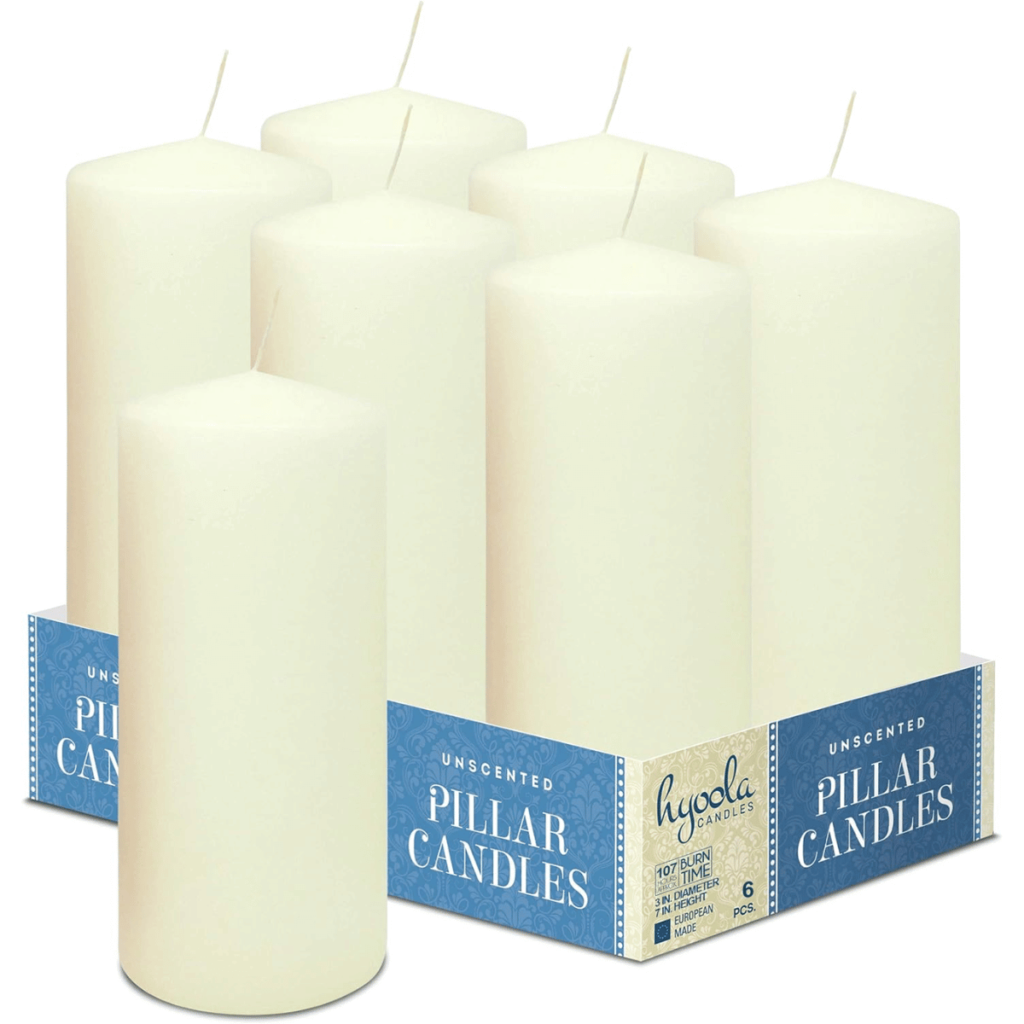
WATER AND SALT
Water is placed on the altar to quench the thirst of the spirits after their long journey. It represents purity and refreshment. Salt is also a common addition, symbolizing the essence of life and the continuity of existence. Together, water and salt provide nourishment and protection for the spirits.

PAN DE MUERTO or Bread
Pan de Muerto is a traditional bread made specifically for Día de los Muertos. It is a sweet, soft bun often dusted with sugar and sometimes decorated with bone-shaped pieces. The bread represents the nourishment needed for the spirits’ journey. If Pan de Muerto is unavailable, any favorite bread can be used. But remember not to eat it after placing it on the altar, as it is considered sacred.
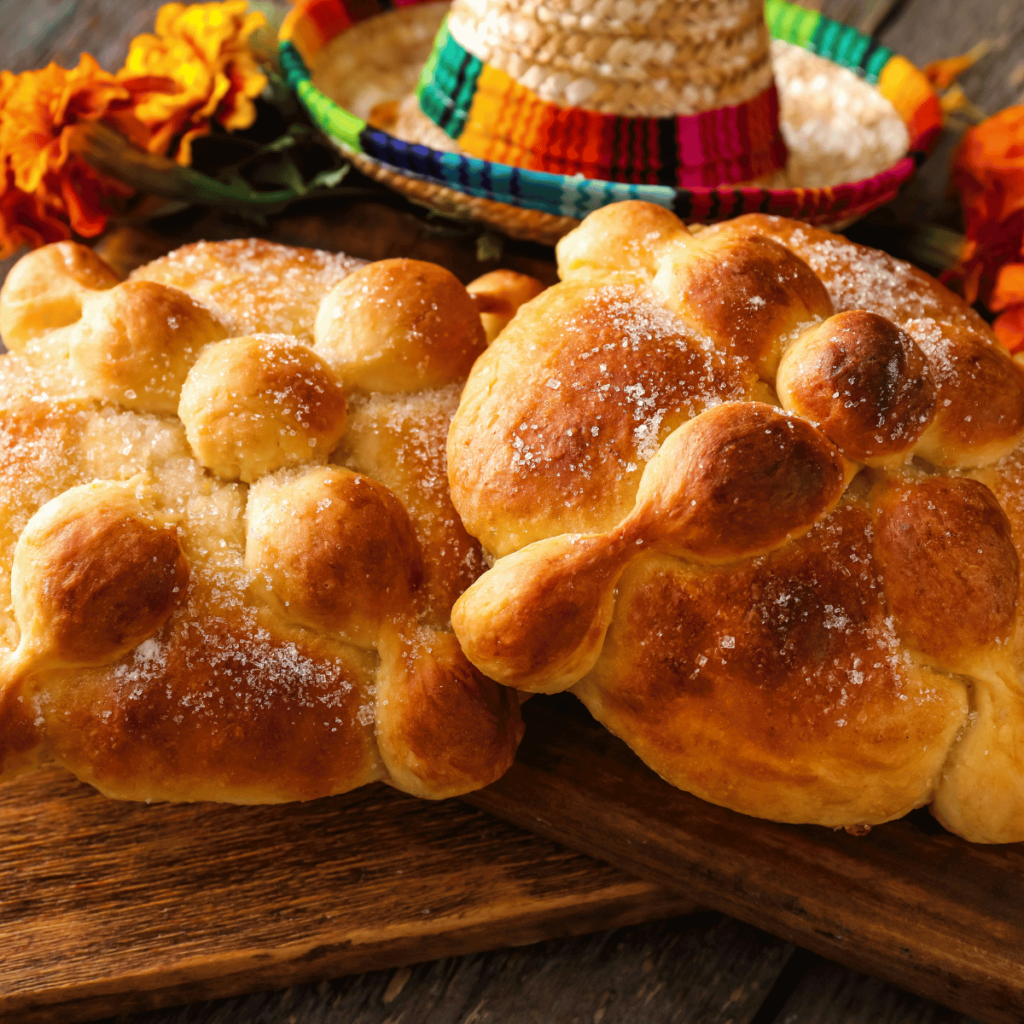
CALAVERAS or Sugar Skulls
Calaveras, or sugar skulls, are decorative skulls made from sugar or chocolate. They are often brightly colored and intricately designed. Sugar skulls represent the deceased and are a reminder of the cyclic nature of life and death. The names of the departed may be written on the foreheads of the skulls, personalizing the tribute and celebrating the lives of those who have passed.
Remember, there is no wrong way or one way to make your altar.
These are guidelines to help you get started. The most important thing is to honor and remember your loved ones who have passed and keep their memory alive by celebrating them and sharing their stories.
How is the Day of the Dead different from Halloween?
While both holidays occur around the same time, the Day of the Dead is a Mexican tradition focused on honoring deceased loved ones with altars, offerings, and celebrations. On the other hand, Halloween is a Western tradition centered on costumes, trick-or-treating, and spooky themes.

